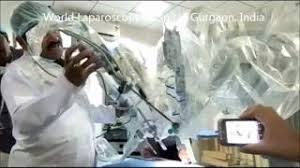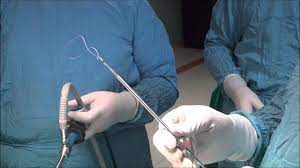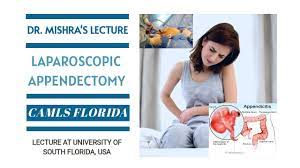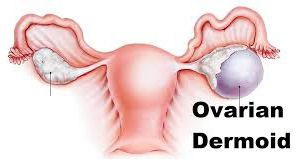Relief from GERD: Laparoscopic Fundoplication for Effective Treatment
Add to
Share
170 views
Report
10 months ago
Description
Gastroesophageal reflux disease (GERD) is a chronic condition characterized by the backward flow of stomach acid into the esophagus, causing symptoms such as heartburn, regurgitation, and discomfort. For individuals suffering from GERD, finding effective treatment options is crucial to alleviate symptoms and improve their quality of life. Among the various treatment modalities available, laparoscopic fundoplication has emerged as a highly effective and minimally invasive surgical procedure. This essay explores the significance of laparoscopic fundoplication in providing relief from GERD, highlighting its benefits, procedure, and postoperative outcomes. Laparoscopic fundoplication involves the surgical repair of the lower esophageal sphincter (LES), the valve that prevents stomach acid from flowing back into the esophagus. During the procedure, the upper part of the stomach, known as the fundus, is wrapped around the lower esophagus, reinforcing the LES and restoring its function. This surgical approach is performed using minimally invasive techniques, which involve making several small incisions in the abdomen and using specialized instruments and a camera to perform the operation. The advantages of laparoscopic fundoplication over traditional open surgery include reduced postoperative pain, shorter hospital stays, faster recovery, and improved cosmetic outcomes. One of the primary benefits of laparoscopic fundoplication is its effectiveness in relieving GERD symptoms. By reinforcing the weakened LES, the procedure significantly reduces the occurrence of acid reflux, alleviating symptoms such as heartburn and regurgitation. Studies have shown that laparoscopic fundoplication achieves high success rates in symptom control and patient satisfaction, with long-term improvement in quality of life. Furthermore, laparoscopic fundoplication offers a durable and long-lasting solution for GERD. The procedure addresses the underlying cause of the condition by strengthening the LES, providing a more sustainable approach compared to medications that merely manage symptoms. Patients who undergo laparoscopic fundoplication often experience a significant reduction in their reliance on medications and experience long-term relief from GERD symptoms. The minimally invasive nature of laparoscopic fundoplication also contributes to its appeal. Compared to open surgery, laparoscopic techniques offer several advantages, including smaller incisions, reduced postoperative pain, decreased risk of complications, and faster recovery. Patients undergoing laparoscopic fundoplication generally experience shorter hospital stays and quicker return to their regular activities, leading to an improved overall surgical experience. Postoperatively, patients are advised to follow a modified diet and lifestyle to promote healing and maintain the benefits of the procedure. This includes adhering to a soft diet initially and gradually reintroducing regular foods, as well as making dietary modifications to minimize acid reflux triggers. Close follow-up with the surgical team is essential to monitor progress, assess symptom improvement, and address any concerns that may arise. Relief from GERD: Laparoscopic Fundoplication for Effective Treatment is an essay that delves into the significance of laparoscopic fundoplication as a highly effective and minimally invasive surgical procedure for treating gastroesophageal reflux disease (GERD). GERD is a chronic condition characterized by the backflow of stomach acid into the esophagus, causing discomfort and various symptoms. This essay highlights the benefits of laparoscopic fundoplication in alleviating GERD symptoms, explaining the procedure's mechanism and postoperative outcomes. It emphasizes the procedure's success in restoring the function of the lower esophageal sphincter (LES) by reinforcing it, thereby reducing acid reflux and providing long-lasting relief. The essay also discusses the advantages of laparoscopic techniques over open surgery, such as reduced pain, shorter hospital stays, faster recovery, and improved cosmetic results. Furthermore, it underscores the importance of postoperative care and lifestyle modifications for maintaining the benefits of laparoscopic fundoplication. Overall, laparoscopic fundoplication emerges as a highly effective treatment option for individuals seeking relief from GERD, enhancing their quality of life and providing lasting symptom control. In conclusion, laparoscopic fundoplication is an effective and minimally invasive surgical option for individuals seeking relief from GERD symptoms. By reinforcing the lower esophageal sphincter, laparoscopic fundoplication restores its function and significantly reduces acid reflux, leading to improved quality of life and long-term symptom control. The advantages of laparoscopic surgery, including reduced pain, faster recovery, and enhanced cosmetic outcomes, make it an attractive choice for both patients and surgeons. With proper patient selection, surgical expertise, and postoperative care, laparoscopic fundoplication offers an effective and durable solution for individuals suffering from GERD, providing them with much-needed relief and improved overall well-being.
Similar Videos






